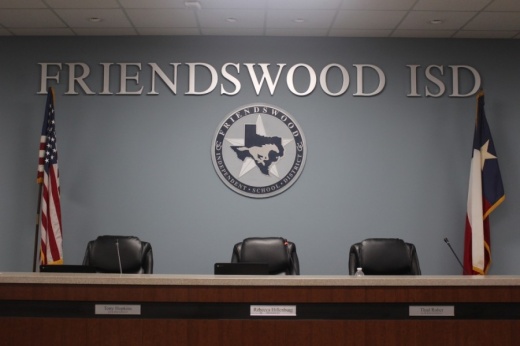Friendswood ISD leaders gave an update on how the district’s students and staff are adjusting to the changes of the 2020-21 school year at a Sept. 14 board of trustees meeting.
After dropping no-show students from the roster and processing withdrawals, the district started the school year with 6,086 students, officials said at the meeting. There are 65 less students at Friendswood High School and about 100 less kindergartners in the two elementary schools compared to the previous year. Nearly 50 substitute teachers from 2019-20 did not return, which officials said is a typical occurrence.
About one in four FISD students are learning virtually this year: 1,569 students chose remote instruction, with online learner percentages varying between 21% and 28% over the six campuses, according to information presented at the meeting.
The board voted in July to start school virtually Aug. 26, with in-classroom instruction beginning Aug. 31 after some transitional days. One of the reasons behind moving the opening date was to give teachers and staff more time to prepare for the upcoming year, Superintendent Thad Roher said in July.
During the Sept. 14 meeting, he said although teachers’ feedback indicated they still could have used more planning time, the transition days were useful and necessary.
“What a great gift from you as a board to move that [start date],” Roher said Sept. 14.
Even the youngest in-person learners are following new COVID-19 protocols such as wearing masks and frequently washing their hands, Roher added, but the environment is similar to pre-pandemic school in the sense that there are chances for interaction among peers.
Lauren Ambeau, assistant superintendent for teaching and learning, said she has been encouraged by the collaborative spirit shown so far by the district’s 18 elementary instructors.
“It’s neat to see that they're turning what could be a problem into an opportunity,” she said.
Ambeau also has a son attending elementary school in FISD, and she expressed support for how the district prepared its younger students to follow new protocols with minimal parental guidance. Her son was able to watch a video showing him directions to his classroom, she said, and he got there worry-free his first day.
Still, the district faces challenges when it comes to its students in need of extra support. Parents of gifted and talented students are concerned with their children not having enough to do during the school day with remote instruction, Ambeau said.
Moreover, the district is working out the finer points of how to translate its literacy and guided reading activities online. There have been more significant learning gaps seen with students in reading than in math, Ambeau said: on average, students can regress multiple grade levels with their reading ability, making the literacy initiatives all the more important.
Kim Cole, executive director of secondary teaching and learning, noted a similar collaborative and inquisitive spirit at the secondary level during the first days of the school year. A high point, she said, has been professional development and celebrating the ways in which teacher learning is happening.
“The fact that teachers are inquiring and asking and wanting to know and wanting to learn, that’s a celebration,” she said.





